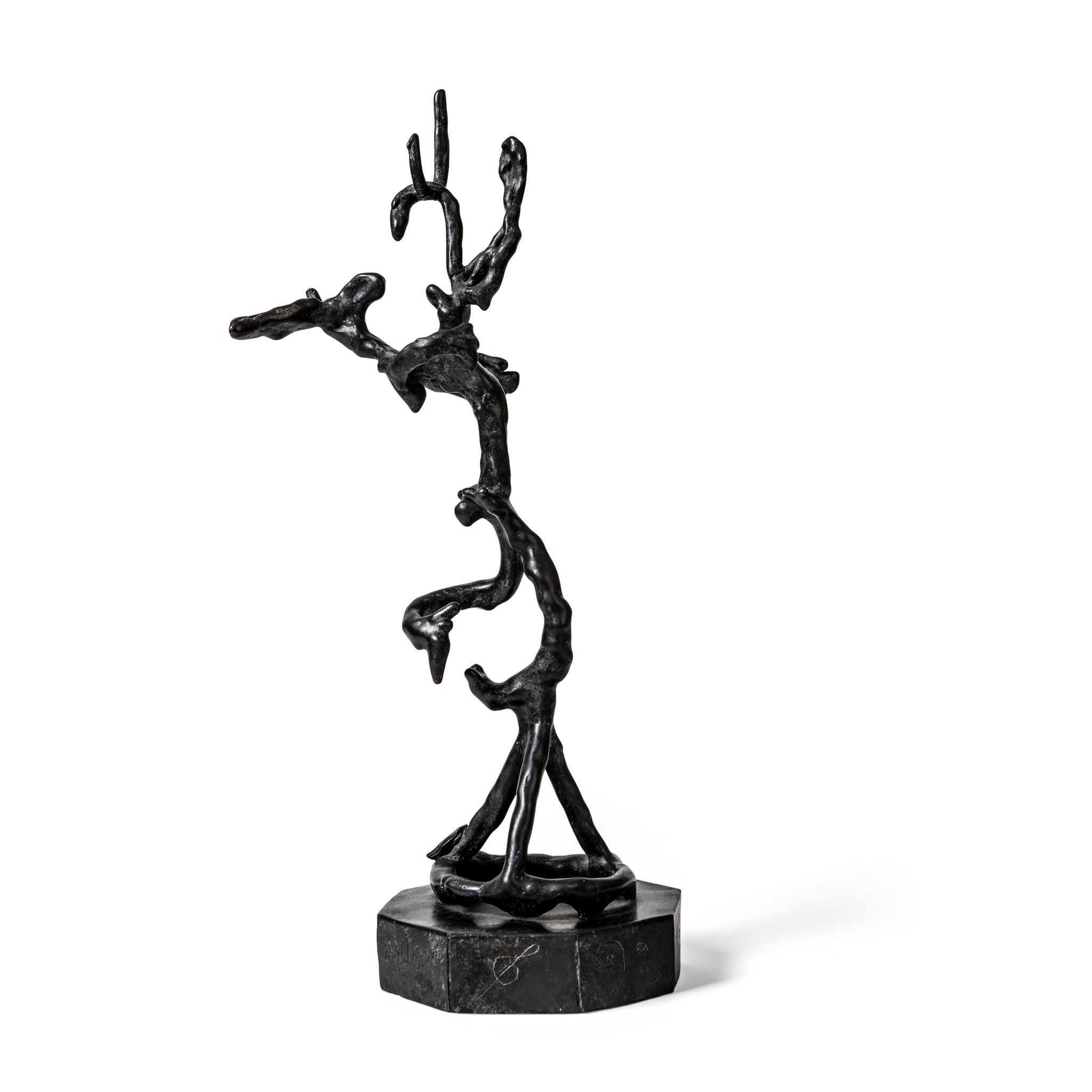Barry Flanagan O.B.E. R.A. (British 1941-2009) §
Prom, conceived 2001
£18,750
Auction: 29 October 2021 from 11:00 BST
Description
6/8, incised monogram twice, dated and numbered '-19 / 6/8', incised 'MOZARTKUGELN / FOR THE LOVE OF MUSIC', stamped with AB Fine Art Foundry, London mark (to base), bronze with black patina
Dimensions
38.5cm high (15.1in high)
Provenance
Provenance:
Waddington Custot Galleries, London, where purchased by the present owner.
Footnote
We are grateful to the Estate of the Artist for their kind assistance with the cataloguing of this work.
“The ears [of a hare] are really able to convey far more than a squint in an eye of a figure, or a grimace on the face of a model” (Barry Flanagan in conversation with Judith Bumpus in: Exh. Cat., London, Tate Gallery, Barry Flanagan: Prints 1970-1983, 1986, p. 15)
Barry Flanagan and the hare are indelibly linked, having first appeared in Flanagan’s work in 1979 and continuing to preoccupy him for the next 30 years. He spoke of his sculptures of hares in an interview with Judith Bumpus on the occasion of his exhibition at the 1982 Venice Biennale:
'Thematically the choice of the hare is really quite a rich and expressive sort of mode; the conventions of the cartoon and the investment of human attributes into the animal world is a very well practised device, in literature and film etc., and is really quite poignant, and on a practical level, if you consider what conveys situation and meaning and feeling in a human figure, the range of expression is in fact far more limited than the device of investing an animal -a hare especially - with the expressive attributes of a human being.’ (Barry Flanagan in conversation with Judith Bumpus, Tate Gallery, London, Barry Flanagan: Prints 1970-1983, exh. cat., 1986, p. 93)
Instantly recognisable as a work by Flanagan, Prom, conceived in 2001, is a quintessential work by the artist - full of movement, energy and joyfulness, and reflects the artist’s interest in dance and music. Flanagan collaborated with the Strider dance assemblage in London, choreographing two dance performances, and movement and dance elements are forever present in his hares. Furthermore, Flanagan’s work of this later period is some of the most tactile that he ever produced. Indeed Prom invites the observer to pick it up to handle its smooth linear forms and contouring lines, inviting the viewer into the frivolity and wit of the work and epitomising the elements for which Flanagan is best known.

